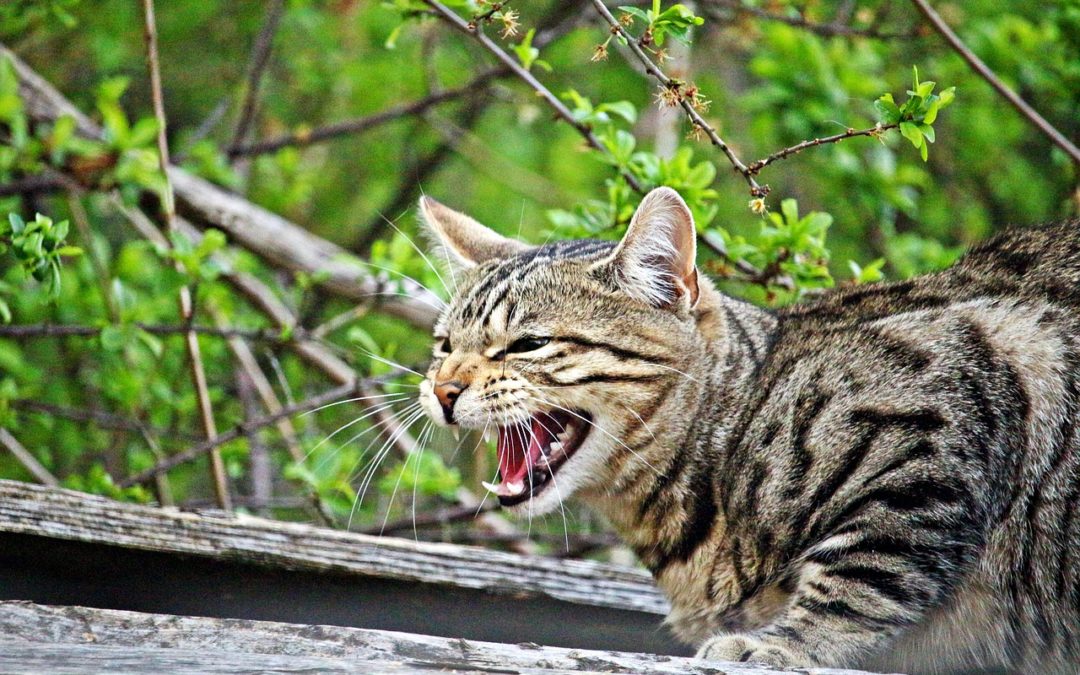Did you know that we offer Behavioral Counseling? We all love our pets, but the fact is, they’re animals and they may act out from time to time. Unwanted behavior is a common problem that many pet parents have to deal with, whether it’s simple house training or something more serious, like aggression. If you’re struggling with a problem like this, you’re not alone. More importantly, we’re here to help! Our team has experience in diagnosing behavior issues in companion animals. We can pinpoint the root cause of your pet’s actions and provide you with a plan for overcoming that headache once and for all. Click here to learn more.
We all love our pets, but the fact is, they’re animals and they may act out from time to time. Unwanted behavior is a common problem that many pet parents have to deal with, whether it’s simple house training or something more serious, like aggression. If you’re struggling with a problem like this, you’re not alone. More importantly, we’re here to help!
Warning Signs of Cat Aggression
Look out for the following signs that may signal your cat is about to attack:
- Dilated pupils
- Flashing tail
- Hissing or growling
- Whiskers and/or ears held flat or pointing directly down or straight out
- Hair standing up on the back of the neck
- Backing into a corner and crouching into a small position or trying to look as large as possible
Types of Cat Aggression
There are many different types of cat aggression that fall into the following categories:
- Petting aggression — Some cats love to be petted. Others enjoy it, but only on their terms and for a duration with which they’re comfortable. Most cats who are about to reach their petting limit, will exhibit at least one warning sign (see below) before losing their cool.
- Territorial/resource aggression — Cats are territorial. When they perceive something as belonging to them, they may feel compelled to guard and protect it. Resources a cat might defend include scratching posts, food bowls, toys, and even people. A new visitor or pet in a cat’s home could also lead to aggressive behavior.
- Fearful/stressful aggression — Whether a cat is afraid of some unfamiliar noise or is feeling anxiety or stress because she just arrived home after being boarded during a vacation, cats that feel fearful or anxious are more likely to aggress.
- Predatory/play-related aggression — Most common among cats that were weaned from their mothers too early, cats experiencing predatory or play-related aggression didn’t have as much (or any) play time with their litter mates, and, as a result, never learned bite inhibition.
- Medical related aggression — Various medical conditions, including pain, hyperthyroidism, cognitive dysfunction, dermatological conditions, and more, can lead to aggression in cats. Cats on certain medications may also experience behavioral changes.
Our team has experience in diagnosing behavior issues in companion animals. We can pinpoint the root cause of your pet’s actions and provide you with a plan for overcoming that headache once and for all.
Before you and your pet suffer through one more day of inappropriate behavior, call us. Let’s talk about how we can help. You deserve to enjoy a peaceful, positive relationship with your companion. We can get you there.
Have questions?
Click the button below to contact us with any and all questions you have! We’re here to help.

